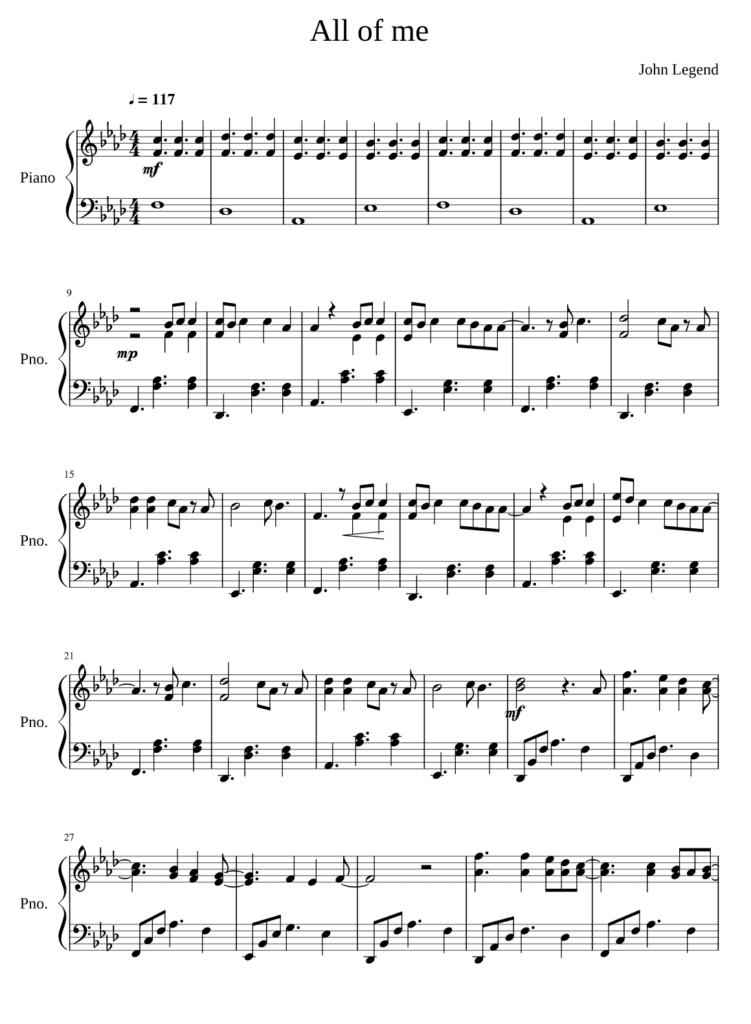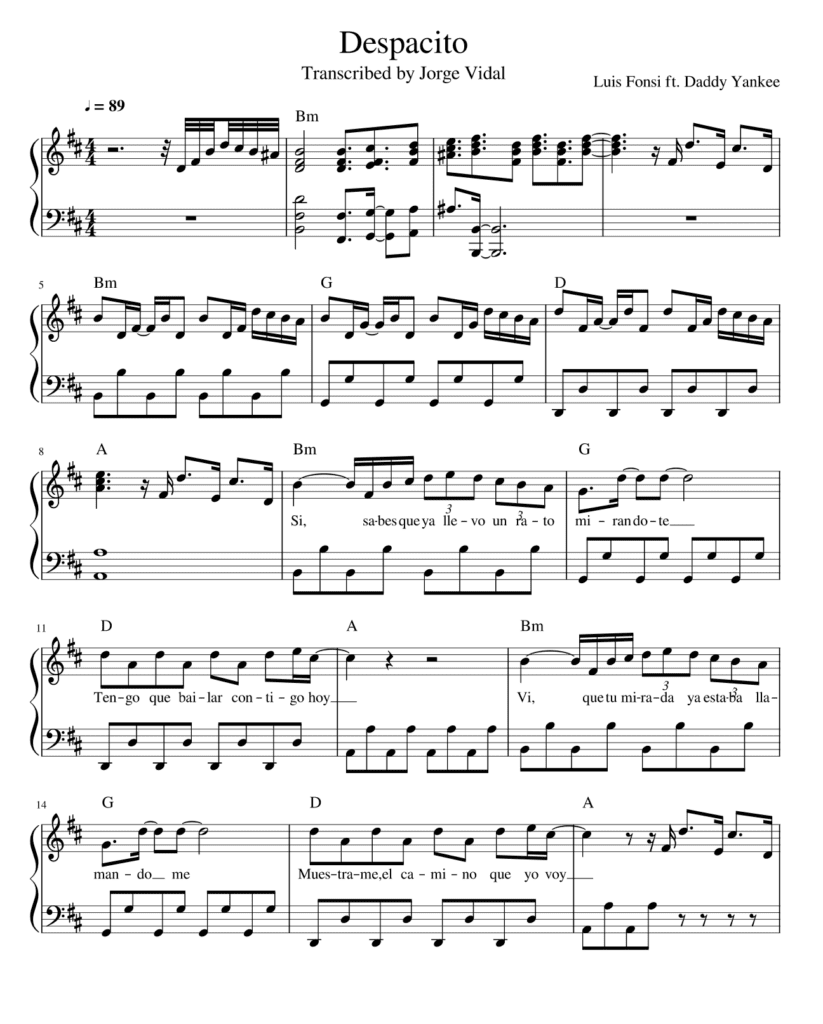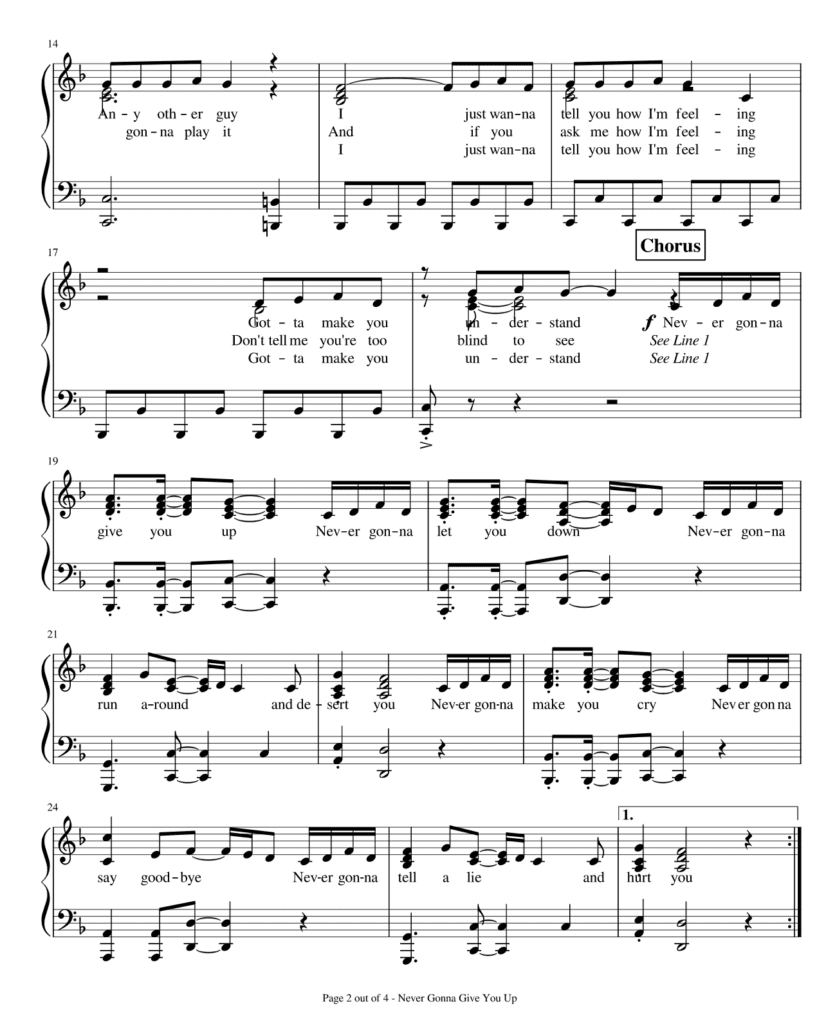Arranging a song for piano is simply a process of translating the musical themes and emotions from your favorite music into satisfying solo piano tunes.
The best part is: you can arrange any genre from pop to folk, jazz, musical theatre and even hymns.
When you arrange songs for piano yourself, you’ll be able to add as much ‘flair’ as you like, make them comfortable to play and avoid the boring repetitiveness which you often find in piano arrangements.
There’s no wrong way to arrange a song for piano, but below we’ll go over a simple step-by-step process to get you started.
The steps are as follows:
- Plan your arrangement
- Lay out your chords
- Lay out your melody
- Add some rhythm
- Texture & tension
- Add your own touch
We’ll begin with a basic beginner arrangement and work our way up to a fabulously embellished show-stopping piano performance. Let’s get started.
Plan Your Arrangement
Before starting with our arrangement, we need to use critical listening and evaluate how the song can be transformed to suit the piano.
Grab a piece of paper and a pen, and write down a few notes on the following questions:
- How would you describe the mood of the song?
- Which elements are most important in the song? (Instruments, melody, vocals, percussion?)
- Which important elements do you want to include in your arrangement?
- Which areas of the song are building and releasing tension?
Our arrangement needs to take into consideration which instruments are in the song. A song which already has piano in it? Easy – we can copy the already existing piano part and fit the rest around it. Checkout Piano2Notes for creating a first draft.
The classic ‘Someone Like You’ by Adele is a perfect example of this. That arpeggiated left hand is the most iconic element in the song, and is heard pretty much all the way through. The song can easily be arranged for piano by moving Adele’s vocals to the right hand.

On the other hand, a song with a full band needs more consideration. You may be compressing 5 or more instruments onto just one (the piano) so think carefully about which instrument parts are most vital to the music.
Lay Out Your Chords
Next, we need to figure out the chords and key signature.
You can do this by ear if you’re capable, but if you’re not sure you can always use chord-identifying websites such as:
- melodyscanner.com – search songs or type in their YouTube URL and Melody Scanner will analyze the chords for you.
- ultimate-guitar.com – search a huge library of songs which users have written out chords or guitar tab for.
(Note: if you are using guitar chords, make sure you aren’t using a ‘capo’ version! The capo transposes guitar chords up a half step per fret, so you’ll need to transpose down again to match the original key of the song.)
Once you’ve figured out your chords, go ahead and play them along with the song to make sure they all match. You might need to shuffle notes around (chord inversions) to make the chord changes smoother.
Lay Out Your Melody
We now need to figure out the notes of the melody. This includes the lyrics and any melodic parts in the song, for example a guitar riff, vocal ad-lib or a flute melody.
You can use your voice to help find the melody, breaking it into small chunks at a time if you are struggling. Listen to the phrase a few times, sing along until you’ve got it memorized, and then match it with the keys on the piano.
Most melodies don’t move around much – they prefer small steps to the next note up or down rather than big leaps. The melody may move around less than you expect!
Now we can put the chords and melody together.
Play the chords in the left hand (one every bar or so) and the melody in the right hand, and you’ll have made a simple and easy-to-follow arrangement of the song.
Add Some Rhythm
Playing block chords in the left hand creates a solid base, but is lacking in any movement.
Listen to the song and see if you can incorporate the rhythm into your chords. You might copy the rhythm of rhythmic instruments like backing guitars or percussion.
When we play blocks of notes together in the left hand, it sounds pretty dense and ‘muddy’ rather than musical (because of the lower pitch). We can prevent that by splitting the notes up and playing one or two at a time.
This could be in an arpeggiated shape like our Adele example above, or perhaps something like this arrangement of John Legend’s ‘All of Me’ which alternates between the bass note and top notes of the chord.

If your melody is already quite rhythmic, you may want to make the left-hand simpler instead. Check out this arrangement of ‘Despacito’ which uses a simple pattern rocking back and forth over an octave.

Texture and Tension
To prevent our arrangement sounding boring and repetitive, we need to add some variation. Remember how we wrote down which areas of the song are building or releasing tension in step 1?
To build tension, we can make the rhythm more intense or add more notes to our chords, or to release it we can make everything simpler and sparser.
Check out this arrangement of ‘Never Gonna Give You Up’. Notice how the right hand plays single notes on ‘nev-er gon-na’ but chords on ‘give you up’ and ‘let you down’. The chords make a thicker texture, giving more emphasis to these specific words.
It also switches to a more intense rhythm with octave leaps in the left hand to build tension before the chorus.

Adding Your Own Touch
Your goal with arranging a song for piano doesn’t have to be to ‘stay true’ to the original song.
You can add your own flairs, for example decorating the melody with extra notes, changing the key, so you can sing along, giving the song a new rhythm or even changing chords.
Vocalists often do fancy flourishes and trills while they are singing, so you might want to add your own interpretation of this into the melody.
You’ll often see ‘jazz piano’ arrangements which use jazz harmony and phrasing to give a whole different jazzy vibe to the song!
To Wrap Up
Arranging your favorite songs for piano not only makes your piano practice more enjoyable, it’s also super effective for developing your listening skills, songwriting and overall musicality.
With time, you’ll find it easier and easier to pick up a melody or chord sequence by ear and translate many different kinds of music into stunning piano pieces.
If you want to play along an already existing arrangement you found on YouTube, Piano2Notes can help you figure out the notes played.

